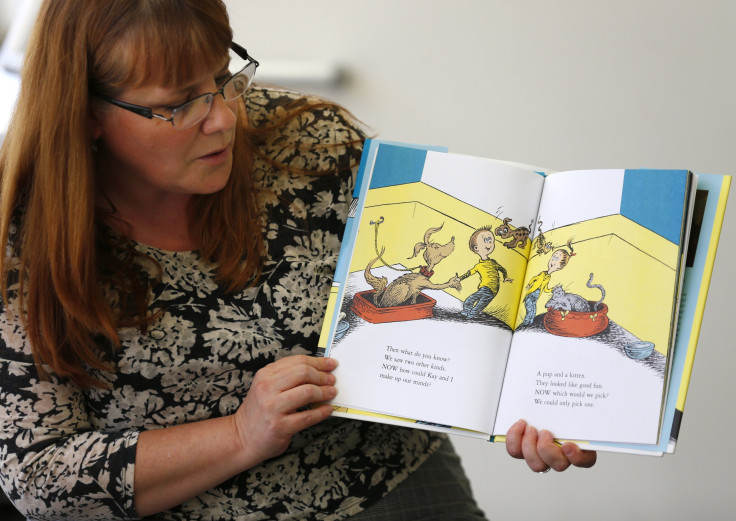Dr. Seuss' Secret Paintings Made Public For First Time: Beautiful Art Collection Shows New Side To Theodor Geisel [PHOTOS]

Theodor Seuss Geisel won over the world with his whimsical prose and drawings captured in dozens of beloved children's stories such as "Green Eggs and Ham" and "The Cat in the Hat." But before he was famous, the illustrator who later became known as Dr. Seuss devoted his late-night hours to creating beautiful paintings with characters that would later inform his work.
"At nighttime, it was just his own unbridled creativity he was able to put out there on canvas, on a piece of paper, on board," Jeff Schuffman, spokesman for the Art of Dr. Seuss Collection, told local reporters. "Which, I think, definitely benefited what he was doing during his day job. I think one inspired the other."
Geisel called his secret art work the "Midnight Paintings." For the first time, more than 40 pieces from the collection have been put on display for the public. The show at the Pendulum Gallery in Vancouver was authorized by the Dr. Seuss Estate in California and runs through Saturday.
"The images, rendered in the artist’s beloved legible, cartoonish style, depict Seussian planets packed with turtles, squirrels, fish and cats, each anthropomorphized and frozen in motion. In one drawing, a fancy bird sips a martini while in another, a pair of squirrels play patty-cake atop a bending branch. This is Seuss’ world, detached from any singular story or narrative trajectory," the Huffington Post wrote.
Geisel, who sold more than 250 million copies of his 44 books before his death in 1991, had asked his wife not to release the paintings while he was alive. He shared the work with family and close friends, but the exhibit marks the first time his paintings have been shared with others.
"I'm gratified to carry out Ted's wishes and have these works revealed to the world." Geisel's wife Audrey said.
Geisel was born in 1904 in Massachusetts and studied at Oxford University to be an English professor. He was a self-taught artist who created fantastic worlds in watercolor, oil and sculpture.
His work was eclectic and provoking. He fixated on creating artwork with images of big cats. An oil painting from 1955 called "A Prayer for a Child" was printed in Collier’s magazine alongside a poem that read: "From here on earth, from my small place, I ask of You way out in space: Please tell all men in every land | what You and I both understand. Please tell all men that peace is good."
Schuffman described the work in Vancouver as having a "Seussian slant." "If you saw them out of context, you may not notice that they are the art of Dr. Seuss," he said. "But when you see them in context with his full body of work, it just clicks and makes sense."
HuffPostArts: Dr. Seuss' secret art collection finally goes on view https://t.co/zXRgt6DEeL pic.twitter.com/2Dd0opmadV
— James Hudson (@JamesHudson2016) July 25, 2016
Have you seen this oil painting by Dr. Seuss? #Art #Culture #Rigaud https://t.co/JFAEANoIo4 pic.twitter.com/XvK8AzKNaY
— Rigaud USA (@RigaudUSA) July 22, 2016
Don't miss this incredible exhibit: 'secret art' of Dr. Seuss - many have never been seen … https://t.co/sPamAwdqqk pic.twitter.com/X9YDuRsu8m
— District Local (@DistrictLocal) July 16, 2016
The secret 'midnight paintings' of Dr Seuss #DrSeuss #art https://t.co/AHsR0ELSgW pic.twitter.com/m16sCq9Vtt
— Bek Hobbes traîné dans les rues par la chat (@Greebohobbes) July 14, 2016
© Copyright IBTimes 2024. All rights reserved.






















